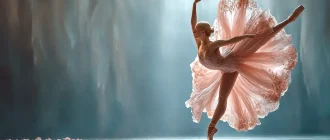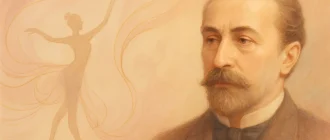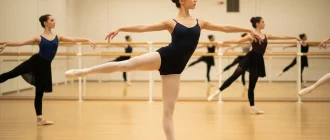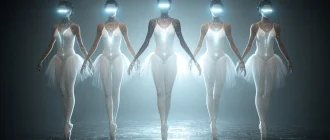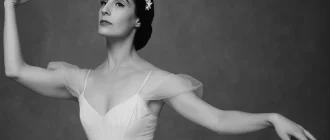Ballet costumes, or the costumes of ballet, are more than just beautiful garments; they play a crucial role in performances by enhancing movement, conveying storylines, and reflecting the art’s rich history.
From the elaborate designs of the 17th-century royal courts to the practical yet stunning modern tutus, the evolution of ballet costumes is a testament to their importance in the dance world. This article explores the journey of the ballet costume, its impact on performance, and the craftsmanship that goes into creating these iconic pieces.
Key Takeaways
- Ballet costumes originated in the royal courts of Italy and France in the 17th century. They evolved to prioritize movement and expression, particularly by introducing ballet slippers and shorter skirts.
- Costume designs in classical Russian ballets are crucial for enhancing the visual narrative. They merge beauty with functionality, allowing dancers to execute complex choreography.
- Fashion designers have greatly influenced the evolution of ballet costumes, introducing modern aesthetics and innovative materials that balance artistic expression with the technical demands of performance.
Art de Podcast
| Era | Costume Characteristics | Craft Techniques | Notable Innovations |
|---|---|---|---|
| 15th-16th Century (Renaissance) | Heavy, ornate garments mirroring court fashion; restrictive movement. | Use luxurious fabrics like brocade and velvet, intricate embroidery, and the incorporation of masks and headdresses. | Introduction of dance-specific attire distinct from everyday clothing. |
| 17th Century (Baroque) | Slightly lighter attire; inclusion of tonnelets (stiff, wired skirts) for men; women in voluminous skirts. | Enhanced embroidery, use of lace and ribbons, elaborate wigs, and accessories. | Development of costumes to signify character roles and social status. |
| 18th Century (Romantic Era) | Introduction of the romantic tutu—calf-length, lightweight skirts; emphasis on ethereal appearance. | Layers of tulle and gauze, lighter corsetry, and pastel color palettes. | Marie Taglioni’s performance in La Sylphide popularized the romantic tutu. |
| Late 19th Century (Classical Ballet) | Emergence of the classical tutu—short, stiff skirts revealing the legs; focus on technical skill. | Ushooks and crinoline for skirt structure, and bodices adorned with jewels and embroidery. | Marius Petipa’s productions showcased the classical tutu’s prominence. |
| Early 20th Century (Modern Ballet) | Simplified design, a departure from traditional tutus, and the incorporation of contemporary fashion elements. | Use of stretch fabrics, minimalist decoration, and collaboration with fashion designers. | Coco Chanel designed costumes for Le Train Bleu (194), blending fashion with ballet. |
| Mid to Late 20th Century (Neo-Classical and Contemporary Ballet) | Diverse styles range from minimalist leotards to avant-garde designs that emphasize movement. | Advanced textiles, innovative construction methods, and the application of technology. | Designers like Barbara Karins, as well as later collaborations with fashion houses, expanded costume aesthetics. |
The Origins of Ballet Costumes

Ballet costumes have their roots in the royal courts of Italy and France from the 17th century, where they were first worn and heavily influenced by the styles of court dress. These early dance costumes were grand and elaborate, featuring masks, wigs, and heavy fabrics that reflected the luxury of the time. Dancers initially wore clothing more suited for display than movement, a style that often restricted their performance.
As ballet evolved, so did its costumes. By the mid-18th century, ballet dancers like Marie Camargo shortened their skirts. They discarded high-heeled shoes in favor of ballet slippers, allowing for greater freedom of movement and more expressive performances.
Choreographer Jean-Georges Noverre replaced bulky skirts and panniers with more streamlined, form-fitting garments, known as clinging tunics, inspired by Grecian robes, allowing for greater freedom of movement.
Cotton manufacturing in the late 18th and early 19th centuries revolutionized ballet costumes, making them more affordable and practical for demanding routines.
Early Beginnings
Ballet costumes have a rich history that dates back to the 15th century. The earliest recorded evidence of ballet costumes can be found in illustrations from the Renaissance period, which show dancers wearing elaborate and ornate clothing.
These early dance costumes were heavily influenced by court dress and were designed to reflect the splendor and grandeur of the royal courts. As ballet evolved, so did the costumes, with designers incorporating new materials, colors, and styles to create visually stunning and functional attire for dancers.
17th and 18th Centuries
During the 17th and 18th centuries, ballet costumes were heavily influenced by the grandeur of court dress, reflecting the luxury of the royal courts. Female dancers wore elaborate costumes with heavy skirts, corsets, and wigs, which, while visually stunning, often restricted their movement.
Conversely, male dancers donned the standard costume à la romaine, characterized by stiff, wired skirts made of brocade or similar materials. Both male and female dancers commonly wore heeled shoes, which added to the elegance but limited their ability to perform intricate footwork.
The landscape of ballet costumes began to change in the 1730s when Marie Camargo introduced ballet slippers, replacing the cumbersome heeled shoes. This innovation enabled female dancers to execute more expressive and agile movements. The late 18th and early 19th centuries saw further transformation with the industrialization of cotton manufacturing.
The widespread availability of affordable cotton fabrics such as tulle, muslin, tarlatan, and gauze allowed for the creation of lighter, more flowing costumes. These materials enhanced the visual appeal of the costumes and provided greater freedom of movement, paving the way for more dynamic and expressive performances.
Classical Russian Story Ballets

Classical Russian story ballets are renowned for their intricate and visually stunning costumes. These garments often featured elaborate designs and multilayered skirts that added to the dramatic effect of the performances. The use of luxurious fabrics and significant embellishments, such as elaborate trains, helped to enhance the visual narrative of the character portrayed in the ballet, creating a captivating experience for the audience.
Multilayered ballerina hoop skirts played a crucial role in facilitating the dramatic movements required by the choreography. These skirts provided aesthetic appeal and practical functionality, enabling dancers to perform complex jumps and turns easily.
Iconic ballets like ‘Swan Lake’ epitomize this blend of beauty, style, and utility, with costumes that accentuate the characters’ ethereal qualities and movements.
The Role of Fashion Designers
Fashion designers have played a pivotal role in the evolution of ballet costumes, bringing innovative aesthetics and modern sensibilities to the stage. Jean Poiret, for instance, is recognized for his radical simplicity and geometric shapes, which introduced a new aesthetic to ballet costumes. His designs significantly departed from traditional styles, shifting the paradigm and influencing how ballet costumes were perceived and created.
Poiret’s influence extended beyond ballet, significantly shaping modern fashion trends. His collaboration with artists and imaginative approach to costume design helped integrate fashion with artistic expression, ensuring ballet costumes remained relevant and visually striking. This innovative spirit inspires contemporary costume designers who seek to blend functionality with creative flair.
Evolution of Female Dancers’ Attire
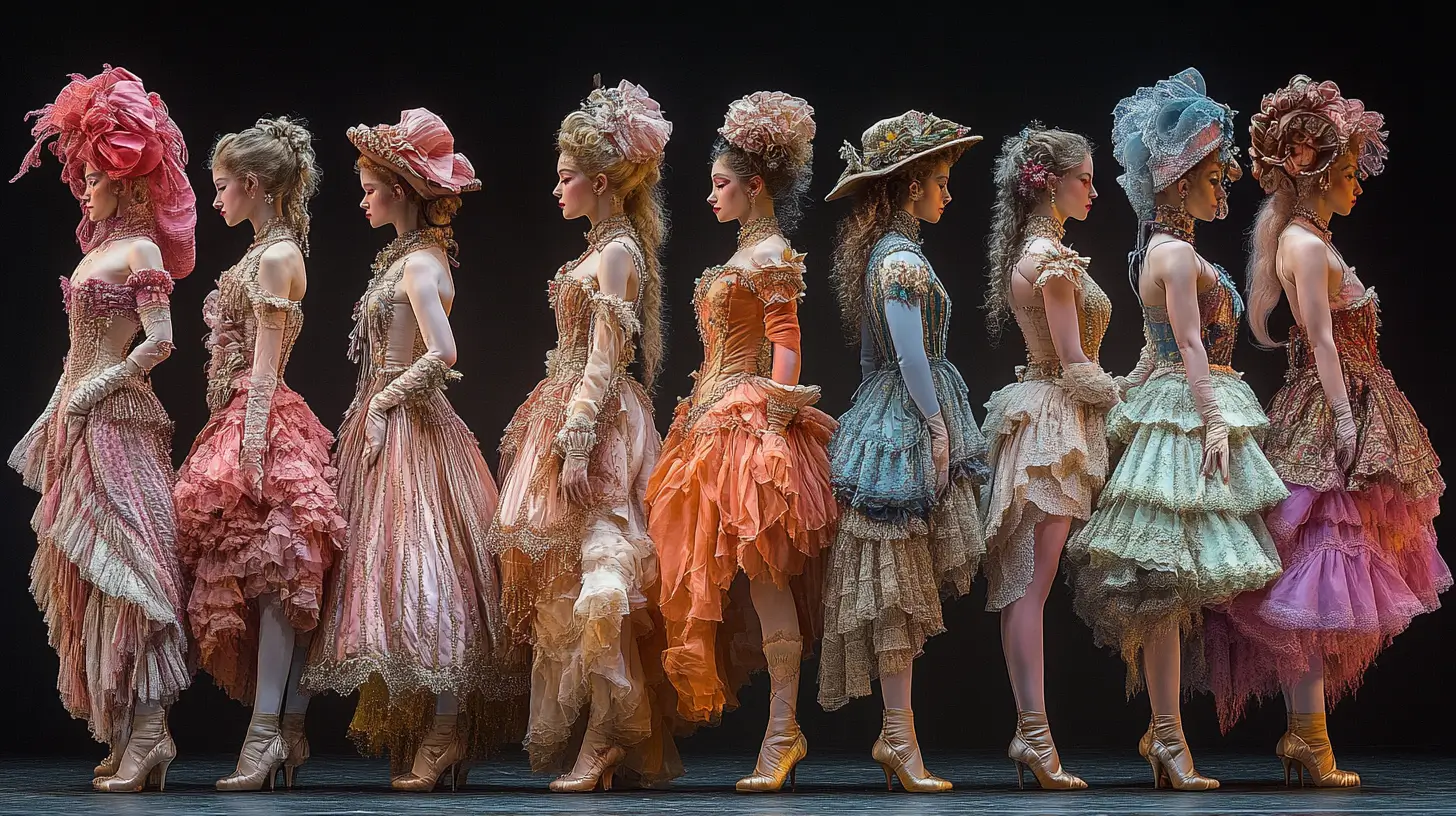
A gradual shift towards greater freedom of movement and comfort has marked the evolution of female dancers’ attire. In the 18th century, female dancers wore leather masks and heavy costumes, but they transitioned to more flexible attire, exemplified by dancers like Marie Camargo and Marie Sallé.
Dancers like Marie Camargo shortened their skirts and introduced heel-less slippers, enabling female dancers to have more expressive footwork and agility. By the late 19th century, the introduction of tights further enhanced dancers’ ability to perform intricate steps and movements.
Significant innovations in pointe shoes also played a crucial role in this evolution. In the late 19th century, Italian designers developed pointe shoes with flat platforms, enhancing comfort and performance. Anna Pavlova later enhanced these shoes by adding unbreakable leather soles and a supportive toe box, making them more durable and supportive for demanding routines.
These changes in attire improved dancers’ technical abilities and influenced the aesthetics of ballet performances. The shift towards lighter and more flexible costumes allowed for more dynamic and expressive choreography, paving the way for the development of modern ballet.
Male Dancers’ Costume Development
Male dancers’ costumes have also undergone significant changes over the centuries. In the late 18th century, choreographer Jean-Georges Noverre advocated for costume reform, adopting clingy and loose tunics inspired by Greekian styles and the costume à la romaine. This shift removed the voluminous skirts and heavy fabrics that had been the standard previously.
By the early 20th century, male dancers and men wore looser tunics and harem pants, reflecting broader fashion trends and a desire among women for greater freedom of movement. The late 1900s saw further evolution in the dress itself, with male dancers often performing in leotards and tight clothing that emphasized their athleticism, allowing for more expressive performances.
The Ballerina Skirt: From Romantic to Modern Tutu
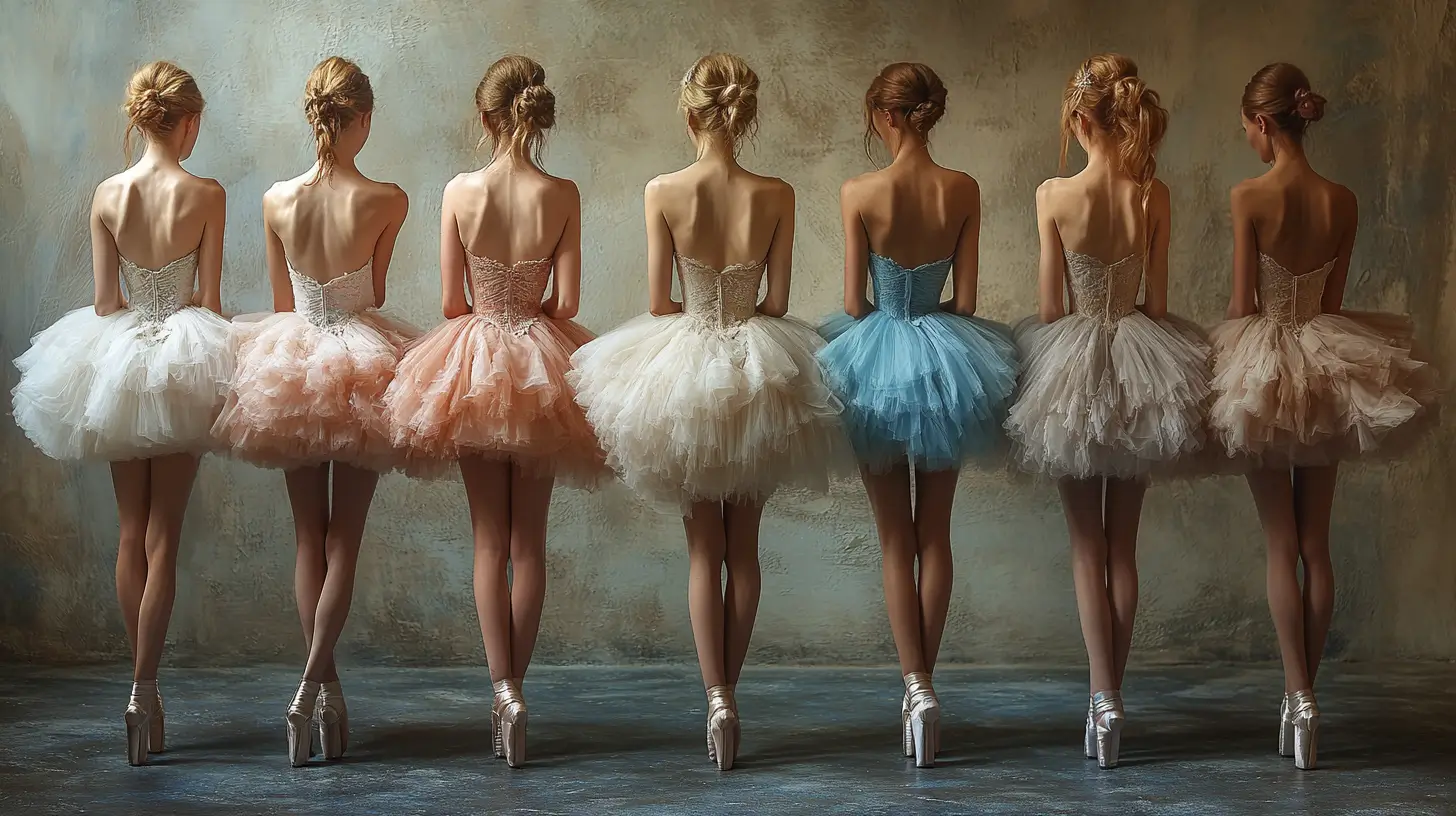
The ballerina skirt, or tutu, has undergone a significant transformation from its romantic origins to the modern design today. The romantic tutu dress, popularized by Marie Taglioni’s Sylphide, featured a fitted lace bodice and calf-length lace tulle, creating an ethereal appearance. This design emphasized the dancer’s grace and elegance, allowing for fluid, airy movements.
By the end of the 19th century, the modern tutu emerged, characterized by a shorter, structured skirt that showcased the dancer’s legs and intricate footwork. This transition allowed for greater freedom of movement and a focus on athleticism, reflecting the evolving choreography of ballet.
The modern tutu remains a staple in ballet costumes, combining aesthetics with functionality to enhance the performance experience.
Pointe Shoes: Revolutionizing Ballet
Pointe shoes have revolutionized ballet, allowing ballerina dancers to perform en pointe and achieve the ethereal quality that defines the art form. Charles Didelot introduced an early version of pointe shoes in 1795, allowing ballerina dancers to rise onto their toes and perform with greater elegance.
Marie Taglioni was the first ballerina to wear shoes specifically designed for dancing en pointe, which had supportive features that made this demanding technique easier.
Introducing shoes with blocked toes around 1820 enhanced female dancers’ ability to perform en pointe, emphasizing movement and grace. Today, manufacturers create various models of pointe shoes to accommodate different foot shapes and performance styles, ensuring that each dancer can achieve their best performance.
Iconic Ballet Productions
![]()
Iconic ballet productions like ‘Swan Lake’ showcase the importance of costume design in ballet masters, creating memorable and impactful performances. The costumes in ‘Swan Lake’ play a crucial role in visually representing the transformation of characters, particularly the distinction between Odette and Odile, the two swan princesses.
The ethereal quality of the enchanted maidens is enhanced by the intricate designs and luxurious fabrics used in their costumes.
These costumes contribute to the visual spectacle of the performance on stage and facilitate the dancers’ movements, allowing them to execute complex choreography with grace and precision. The role of costumes in such productions underscores their significance in bringing the story and characters to life on stage.
Costume Designers and Their Craft
Costume designers in ballet are true artisans, dedicating countless hours to crafting each costume with precision and creativity. Creating a ballet costume can take 10 to 280 hours, reflecting a deep commitment to quality and artistic integrity. These designers often collaborate with various artisan workshops, each specializing in different aspects of costume production, ensuring a high-quality final product.
The complexity and cultural richness of the stories portrayed in classical Russian ballets are reflected in the structure and layers of the costumes. This meticulous craftsmanship ensures that each costume looks stunning and supports the technical demands of the dancers’ performances.
Collaboration and Communication
Creating ballet costumes requires close collaboration and communication between costume designers, choreographers, and dancers. Costume designers must work closely with choreographers to ensure that the costumes align with the overall aesthetic and theme of the production.
They must also consider the dancers’ needs and preferences, including comfort, mobility, and visibility. Effective communication is key to ensuring that the costumes meet the needs of all parties involved and enhance the overall performance.
Materials and Techniques
Advancements in fabric production during the Industrial Revolution had a profound impact on ballet costumes, allowing for the use of lighter materials that enhanced ballet dancers’ movements. The introduction of tights in 1790 significantly improved freedom of movement, allowing dancers to execute more intricate steps and routines.
The creative process in costume design involves meticulously selecting fabrics and embellishments that enhance choreography and dancer comfort. This balance between aesthetics and functionality is crucial in creating beautiful costumes that support the technical demands of ballet performances.
Embellishments and Adornment
Ballet costumes often feature intricate embellishments and adornments that add visual interest and drama to the performance. These elements include sequins, beads, feathers, and lace, which are carefully applied to the costume to create a specific effect.
Embellishments can also convey character or theme, such as using flowers or leaves to represent a natural or whimsical setting. The use of embellishments and adornments requires great skill and attention to detail, as they must be carefully balanced to avoid overwhelming the overall design of the costume.
Influence of Historical Fashion Trends
The evolution and style of ballet costumes have always been closely linked with historical fashion trends. During the Renaissance and Baroque periods, ballet costumes were heavily influenced by the luxury of court fashion, featuring luxurious materials and elaborate designs. Silks and satins, often embroidered with gold, characterized the decoration of ballet costumes from the 17th century, reflecting the grandeur and style of the court.
In the 19th century, the Romantic movement changed female ballet costumes, incorporating floral crowns and intricate bodices. The early 20th century saw further shifts, with designers like Isadora Duncan introducing more natural silhouettes that broke away from traditional constraints.
These historical influences have left a lasting impact on ballet costume design, shaping the styles and aesthetics we see today.
Modern Ballets and Contemporary Designs

Modern ballets have embraced contemporary designs, moving away from traditional tutus to reflect current cultural trends. By the mid-20th century, contemporary streetwear replaced conventional ballet costumes, introducing new aesthetics to the stage. These changes reflect a broader trend towards more abstract themes in modern ballet, departing from fixed narratives.
Despite these innovations, the technique in contemporary ballet remains grounded in classical principles. Integrating modern fashion elements with traditional ballet techniques creates a unique and dynamic performance style that resonates with today’s audiences.
The Business of Ballet Costumes
Creating ballet costumes can be costly, requiring significant funding to cover the expenses of materials, labor, and design. Costume budgets can vary widely depending on the size and scope of the production, as well as the level of detail and complexity required.
Funding for ballet costumes can come from various sources, including grants, donations, and sponsorships. Many ballet companies also rely on the support of fashion designers and other industry partners to help offset the costs of costume production.
The Importance of Facial Expressions
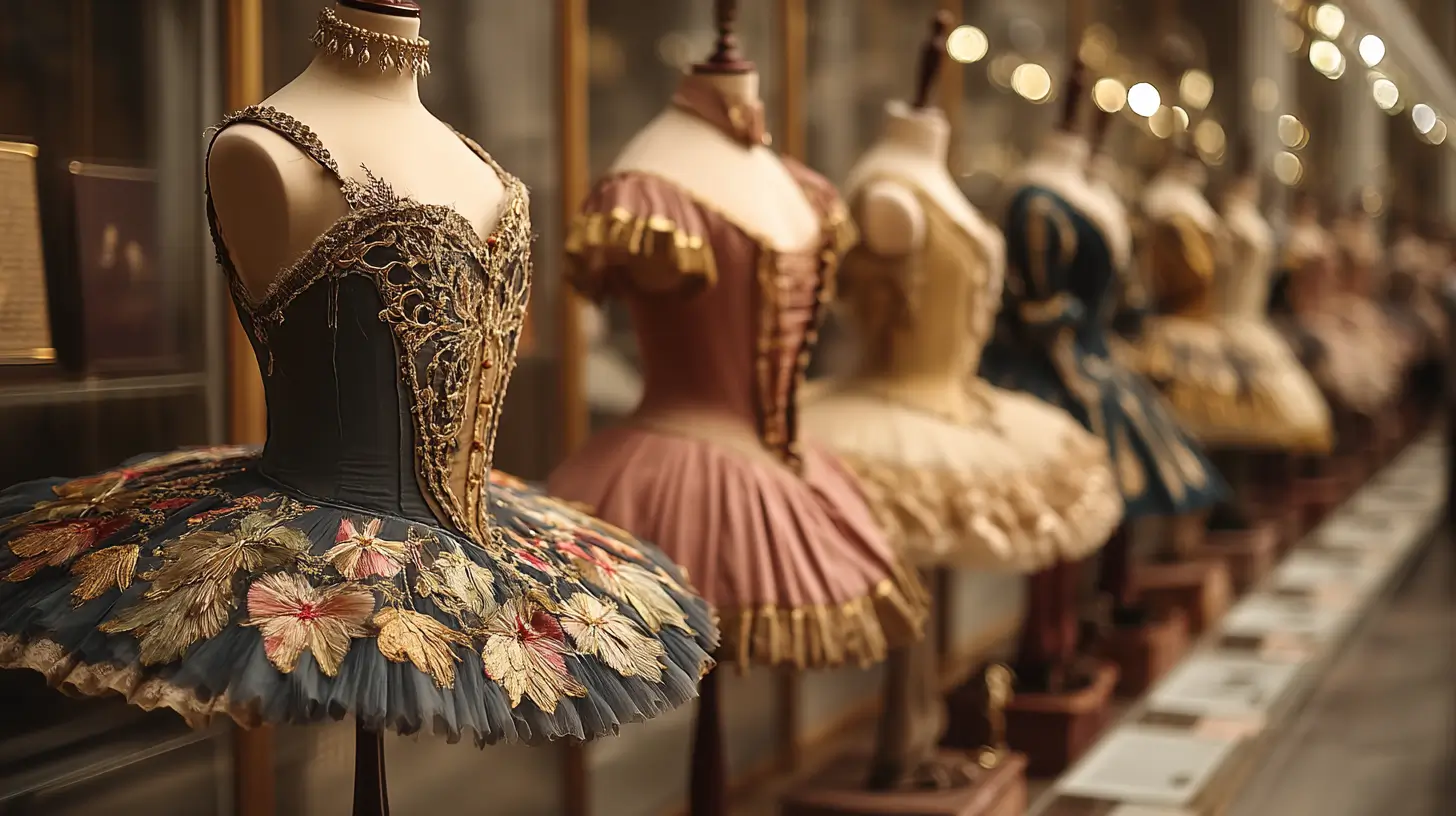
Facial expressions are vital for conveying emotions and narratives in ballet, allowing performers to tell a story without words. A technically sound routine can transform into an emotionally impactful experience through effective facial expressions, enhancing the connection between dancers and the audience.
Training in facial expressions allows dancers to internalize the emotions they portray and ensure authenticity in their performance. Music plays a crucial role in dance, guiding these expressions, as the mood and rhythm inform how dancers present themselves during performances.
Integrating facial expressions into ballet performances creates a more meaningful and engaging experience for the audience.
Resume
The journey through the evolution of ballet costumes reveals a fascinating blend of history, fashion, and artistry. From Italy and France’s grand courts to modern ballet’s contemporary stages, costumes have continuously evolved to enhance the visual and technical aspects of performances.
The contributions of fashion designers, the introduction of innovative materials and techniques, and the meticulous craftsmanship of costume designers all play a crucial role in this ongoing evolution.
As we look to the future, the evolution of ballet costumes will undoubtedly continue, driven by new trends and technological advancements. This dynamic interplay between tradition and innovation ensures that ballet remains a vibrant and captivating art form, continually pushing the boundaries of performance and design.
Costume Rental and Sales
For many ballet companies and schools, renting or purchasing costumes is a practical solution to meet their production needs. Costume rental companies offer a variety of options, from classic tutus to modern and contemporary designs, providing flexibility for multiple performances. These companies often maintain extensive inventories, allowing producers to find costumes that fit their specific requirements.
On the other hand, costume sales companies offer the option to purchase costumes outright, often providing custom design and construction services. This allows for a more personalized approach, with costumes tailored to the unique vision of the production.
Some designers and companies specialize in creating costumes for specific types of ballet, such as classical Russian story ballets or modern ballets, ensuring that each production has the perfect attire to bring its artistic vision to life. Whether through rental or purchase, these options provide valuable resources for ballet companies, enabling them to present visually stunning and professionally crafted performances.
Construction and Fit
The construction and fit of a ballet costume are paramount to its success, as they must allow the dancer to move freely and comfortably while maintaining the garment’s aesthetic integrity. Designers use various techniques, such as draping and pattern making, to create flattering and functional costumes.
The costume’s fit is meticulously tailored to the individual dancer’s body, ensuring that it enhances their performance rather than hindering it.
Collaboration between designers and dancers is essential in this process. Designers work closely with dancers to understand their specific needs and preferences, making adjustments to ensure the costume meets all requirements.
This attention to detail ensures that the costume looks stunning and supports the performance’s technical demands, allowing dancers to execute their routines confidently and gracefully.
Fabrics and Textures
The choice of fabrics and textures is a cornerstone of ballet costume design, directly impacting the garment’s aesthetic and functional aspects. Designers must select durable fabrics to withstand the rigors of performance while also being comfortable for the dancers. Commonly used materials include tulle, netting, and stretch fabrics like Lycra and spandex, which offer the necessary flexibility and support.
Textures are crucial in adding depth and visual interest to a costume. Velvet, satin, and lace often create rich, layered looks that catch the light and enhance the dancer’s movements. Decorative techniques such as beading, embroidery, and appliqué add intricate details that elevate the overall design.
These embellishments not only contribute to the visual appeal but also help convey the character or theme of the ballet, making each costume a work of art in its own right.
Inspiration and Research
Ballet costume designers draw inspiration from a myriad of sources, ensuring each costume is both visually captivating and historically accurate. Historical periods, cultural traditions, and artistic movements are rich wells of inspiration.
Designers often immerse themselves in extensive research, studying the works of renowned ballet masters like Marius Petipa or delving into the specific cultural and historical context. Ballet fashion designers have also left an indelible mark on ballet costume design. Icons such as Christian Dior and Coco Chanel have drawn inspiration from ballet, influencing and being influenced by the art form. This cross-pollination of ideas has led to innovative designs that blend the elegance of ballet with contemporary fashion sensibilities.
By combining meticulous research with creative vision, costume designers craft garments that enhance performance and pay homage to ballet’s rich history and cultural significance.
Frequently Asked Questions
How did ballet costumes originate?
Ballet costumes originated in the royal courts of Italy and France during the 17th century, reflecting the styles of court dress. This historical context established a foundation for the intricate designs and elegance associated with ballet attire today.
What was the significance of Marie Taglioni’s romantic tutu?
Marie Taglioni’s romantic tutu dress, introduced in 1832, was significant as it emphasized grace and elegance with its fitted bodice and calf-length tulle skirt, shaping the aesthetic of ballet performance. This attire contributed to the ballet’s visual language development, highlighting the dancer’s movements and artistry.
How have modern ballet costumes changed from traditional designs?
Modern ballet costumes have evolved to include contemporary streetwear, clothing, and cultural trends, departing from traditional tutus while preserving classical ballet techniques. This shift established tutu as a ballet master and standard costume, allowing for greater expression and versatility for women in dance performances.
What role do costume designers play in ballet?
Costume designers play a crucial role in ballet by creating high-quality, visually stunning costumes that enhance the performance. Ensuring they work with artisan workshops is essential to achieving the artistic vision of the production.
Why are facial expressions important in ballet?
Facial expressions are essential in ballet, as they enhance emotional expression and storytelling, elevating performances from mere technical execution to engaging experiences for the audience.


